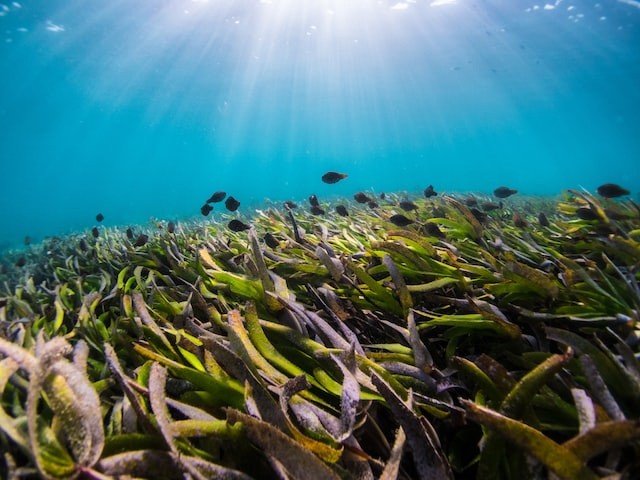Scientists are surprised to learn that marine animals fertilize algae and plants. Pollination may have existed in the water millions of years before terrestrial plants first arose, contrary to what was once believed to be a land-only process.

Looking Back Ten Years Ago
In a research published in the little magazine Inter-Research Science Publisher in 2012, Solis-Weiss and her coworkers proposed that organisms could play a part in ocean pollination.
Pollinators have a well-established function on Earth. Thousands of kinds of blooming plants rely on animals and insects for reproduction. The pollinators help the plants reproduce sexually while the plants offer nectar or the prospect of food. But until recently, it was thought to be a phenomenon that happened solely on land and not in the sea.
Emma Lavaut, a marine biologist at Roscoff Marine Station of the Sorbonne University in France, reported that many marine species discharge their sperm and eggs into the ocean, where the currents fertilize them. Lavaut's research shows how intricate these partnerships are and how they benefit both parties.
Also Read : Massive Brown Seaweeds May Wash Ashore this Summer, Experts Warn Beachgoers to Stay Cautious
Seagrass and Weeds
The Solis-Weiss team built seagrass Thalassia testudinum study fields on the ocean's edge and aquariums to document the pollination process and support their theory whenever the male flowers of T. testudinum bloom at dusk, worms and other invertebrates cluster around them as they open, coating themselves with pollen.
The pollen they get from the masculine flowers attaches to their bodies, so they travel to the feminine blossoms to leave the pollen there, according to research done by Solis-Weiss. This was the first study to show pollination in the water, and the team published their findings in the journal Nature in 2016, along with images of pollen-covered marine worms.
Lavaut was the next to notice a comparable occurrence while she researched for her Ph.D. thesis on the mysterious reproduction of G. gracilis. The female alga stores its eggs inside its funnel-shaped filaments, known as thalli, instead of spewing them into the waves like much other marine life. The males release the small cells but lack the tails necessary to swim to the female plants and enter the filaments.
The taxonomic group to which red algae belong developed around 1 billion years ago; therefore, this apparent disadvantage does not affect the seaweed's ability to reproduce. Lavaut wanted to know how these species reproduced, and her adviser Myriam Valero, a population geneticist at the CNRS, was also interested in this.
Valero observed that most fertilization occurs at low tide, when there is little water, throughout the years of observing the algae in the tidepools around Europe. Idotea balthica, crustaceans resembling a cross between a shrimp and a pill bug, are in large swarms swimming inside the algae then. Valero and her colleagues questioned if they were carrying sperm on their bodies.
Both creatures are supporting one another in this instance. Algae offer protection and nourishment for the isopods in the form of an algal biofilm that covers G. gracilis. These red algae can photosynthesize thanks to cleaning.
Prehistoric Underwater Plants
Evolutionary biologists and pollination ecologists point out that although two teams identified a behavior that appears identical, the two studies had significant variances.
Despite having similar names, seaweed and seagrass are two highly distinct creatures with quite different evolutionary histories.
Seagrasses originated from terrestrial plants that migrated to the sea while retaining certain characteristics of the land. According to Ollerton, seaweeds have only a tenuous connection to plants and are a subspecies of algae. They are very old animals that went through evolution long before land plants emerged from the water.
According to the new research, animals may be more susceptible due to their significant and previously unrecognized interactions with water plants and algae. For red algae, for instance, most pollination occurs in shallow tide pools, where development, climatic change, and pollution may disturb the delicate dance between animals and the plants they pollinate.
Related Article : Seaweed and Chalk May Help Combat the Ocean's Plastic Pollution
For more environmental news, don't forget to follow Nature World News!
© 2026 NatureWorldNews.com All rights reserved. Do not reproduce without permission.





